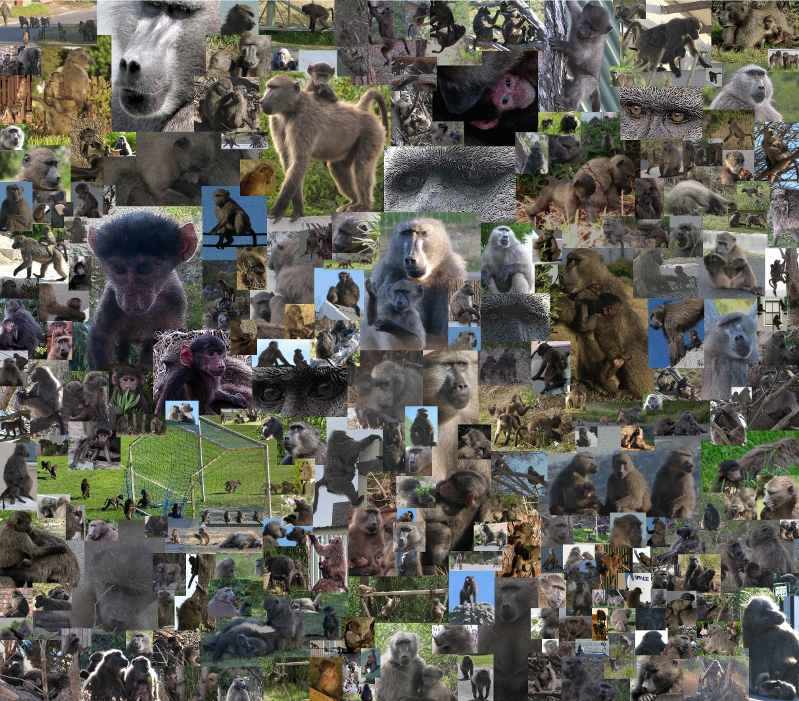There are around 500 baboons in total on the Peninsula.
In 1999 there were 365 baboons in the North and South including the Cape Point Reserve.
In 2013 there are approximately 500 baboons.
Baboons in the North, considered to have the most growth, have increased from 95 to 208 in 15 years.
A increase of 113 baboons in 15 years.
Baboons in the South have grown from 270 in 1999 to 290 in 2013.
An increase of 20 baboons in 15 years.
There is no room for experimentation in managing this already small endangered Peninsula population.
In 2009, following a change in management and management strategies of the baboons which increasingly began to adopt the input of a local research unit, a controversial protocol was introduced that allows culling of "dispersing males and repeat raiders" i.e. baboons leaving the troop and coming into the urban area and "raiding" or eating human food.
In 2010 another protocol was adopted with more extensive criteria.
Given the opportunity, baboons of any age will raid unprotected properties. Peninsula baboons have been the only protected baboons in South Africa since 1998. By classifying baboons as "repeat raiders", the protocols appear to override this status.
While some residents view baboons as little or no problem, because they baboon-proof, even enjoying seeing wildlife in the area, some residents have put pressure on authorities for their removal.
Input into the protocol and recommendation and endorsement of noise aversion techniques like bullwhips and bearbangers and pain aversion tools like paintball guns by baboon researchers (BRU) have been criticized by independent scientists, primatologists and conservationists.
Given the layout of the Peninsula, where baboon home ranges are at times next to or intersected by human settlement, it is impossible for baboons never to come into urban areas. Yet by means of these protocols, baboons can be killed for doing so. One objection to the protocol is that there is little or no law enforcement for feeding baboons or failing to baboon proof. Baboons pay the price.

Pictured above, around 350 baboons. Currently there are around 500 baboons in the Peninsula, with the southern population of 290 in 2013 having apparently increased by only around 20 from the 1999 census.
Baboon statistics of the North and South populations in addition to the Cape Point Reserve baboons
North Peninsula
1999 95
2013 208
South Peninsula (troops In and out of Cape Point Reserve)
1999 270
2013 290
Totals of North and South Peninsula troops
1999 365
2013 498
Above photos of members of two of the eleven managed Peninsula troops represent the fact that these baboon numbers remained relatively constant for a decade at little over 350, in part due to human interaction against the baboons. Since 2009, however, culling baboons has been implemented as a controversial strategy.
While responsible human-baboon management, education and law enforcement controlling both feeding or hurting baboons is required in managing the Peninsula baboons, the need for culling protocols has been strongly disputed, particularly one based on criteria heavily biased against natural baboon behaviour - dispersing males attempting to move to a new troop, usually a lengthy and even repeated natural process in their lives, and baboons eating available food.
The June 2010 protocol also includes other criteria for culling and has caused an outcry, as did the first protocol.
As baboons of any age or sex will eat available food, by classifying baboons as "repeat raiders", the protocol has also attempted to override their legally protected status.
It has been strongly criticized by independent scientists, primatologists and experts. There have been calls for the opinions of these individuals to be heeded rather than following narrowly focused input.
Other controversial management strategies since 2009 include bullwhips and bearbangers to chase the animals, the size of dogs and puppies, methods that traumatise them and are subject to abuse and also send the wrong message to residents who hurt them.
Methods used by the previous service provider Baboon Matters have worked effectively and have also been humane. These included whistles, and shouts.
After the service provider appointed in the second half of 2009 took over, the humane methods were derided by the research unit involved, BRU, and began to be used less often. A method called "holding the line" was also introduced whereby 3 or 4 monitors stand in front of the troop on the urban edge.
However, baboons simply broke through the gaps of the "imaginary line" and because baboons were being held so close to the urban edge it gave them increased opportunities to raid unsecured properties.
This led to those residents who fail to effectively baboon-proof or even refuse to do so on the grounds that it is "inconvenient", being frustrated by baboon visits.
In August 2012 a new service provider headed by a scientist was appointed. They used aggressive tools like paintballs, also previously recommended by the research unit whose input has influenced management decisions since 2009.
For more also visit : capechacmababoons.yolasite.com
L.Thomas
No portion may be reproduced without permission of site author.